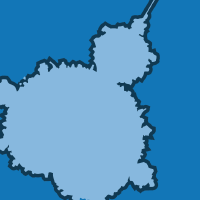Topic Menu
► Topic MenuTopic Editors

2. LAUM UMR CNRS 6613 Le Maine University, 72000 Le Mans, France

Complexity Descriptors from Different Disciplines: Links and Applications
Topic Information
Dear Colleagues,
The study of non-linear dynamical systems or the analysis of time series through chaos theory, geometric theory (fractals, multifractals), information theory (entropies), complexity theory (Kolmogorov complexity, Lempel-ziv complexity, ...), ..., have allowed the development of new descriptors capable of better classifying, predicting the functioning/behavior of systems or time series.
The fact of having approached this problem from several angles has also allowed highlighting bridges between these different theories and an increased understanding of the complex systems studied; however, some links remain hidden or even unexploited.
On the other hand, the list of descriptors that can be used to characterize, qualify, and quantify a system/time series/biological sequence is becoming increasingly long, and for neophytes, the choice of certain descriptors can sometimes be difficult. Seeking to highlight bridges and similarities between these different existing descriptors could facilitate greater enlightenment for informing the selection of certain descriptors and even assisting in improving understanding of the problem under consideration.
To initiate the reflection, several existing examples (non-exhaustive list) showing bridges between disciplines are presented below in addition to some suggested avenues for further exploration:
- The concept of self-organized criticality has allowed a better understanding of “stable” states at several scales, leading to the development of multi-scale descriptors/invariants such as fractals and multi-fractals, and a link between the theory of chaotic dynamical systems and fractal geometry has been highlighted;
- The concept of a recurrence graph, which results from the projection of a multidimensional phase space onto a two-dimensional space, has allowed better describing the dynamics of a system, especially when moving from one type of transition to another. The set of descriptors quantifying recurrences (RQA) is based on the search for similar patterns and a number of these descriptors, such as the sample entropy, which allows a bridge with information theory and recurrences from phase diagrams. The correlation integral, fractal dimension of attractors, and Lyapunov exponents are other well-known examples.
- The analysis of fundamental properties such as the symmetry of patterns (e.g., palindromes), either directly from time series or from recurrence graphs, can lead to the development of descriptors sensitive to symmetry variations, such as the irreversibility factor, symmetry or symmentropy, to name but a few. A bridge between information theory, geometric theory, and dynamical systems theory is thus created.
This Special Issue provides an opportunity to highlight links that are still hidden or unexploited or even create new ones. There is also an opportunity to take stock of these different links in order to help the researcher choose the most appropriate descriptors for his or her problem.
Prof. Dr. Jean-Marc Girault
Prof. Dr. Tuan D. Pham
Topic Editors
Keywords
- pattern recognition
- complexity
- similarity
- entropy
- recurrence
- symmetry
- fractal
- multifractal
- irreversibility
- causality
Participating Journals
| Journal Name | Impact Factor | CiteScore | Launched Year | First Decision (median) | APC |
|---|---|---|---|---|---|

Entropy
|
2.1 | 4.9 | 1999 | 22.4 Days | CHF 2600 |

Fractal and Fractional
|
3.6 | 4.6 | 2017 | 20.9 Days | CHF 2700 |

Dynamics
|
- | 1.2 | 2021 | 14.4 Days | CHF 1000 |

Symmetry
|
2.2 | 5.4 | 2009 | 16.8 Days | CHF 2400 |

MDPI Topics is cooperating with Preprints.org and has built a direct connection between MDPI journals and Preprints.org. Authors are encouraged to enjoy the benefits by posting a preprint at Preprints.org prior to publication:
- Immediately share your ideas ahead of publication and establish your research priority;
- Protect your idea from being stolen with this time-stamped preprint article;
- Enhance the exposure and impact of your research;
- Receive feedback from your peers in advance;
- Have it indexed in Web of Science (Preprint Citation Index), Google Scholar, Crossref, SHARE, PrePubMed, Scilit and Europe PMC.

